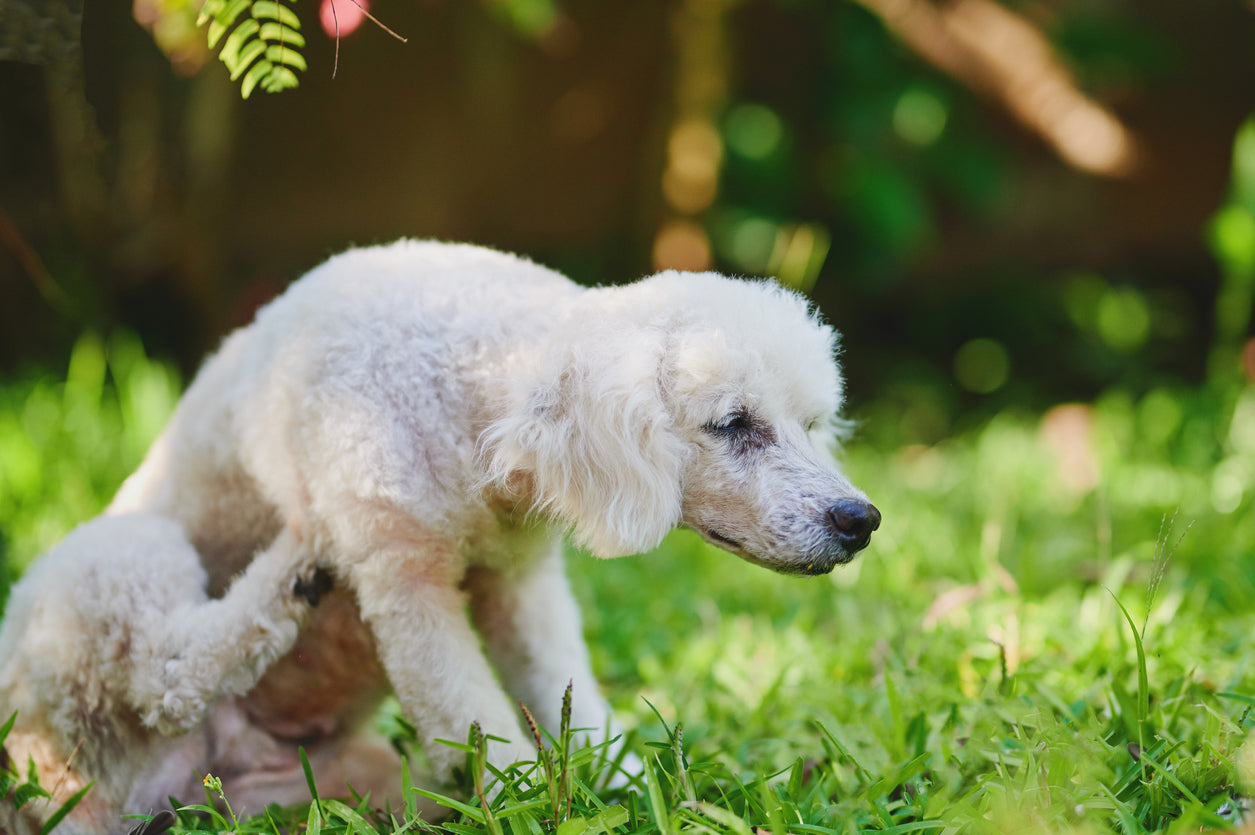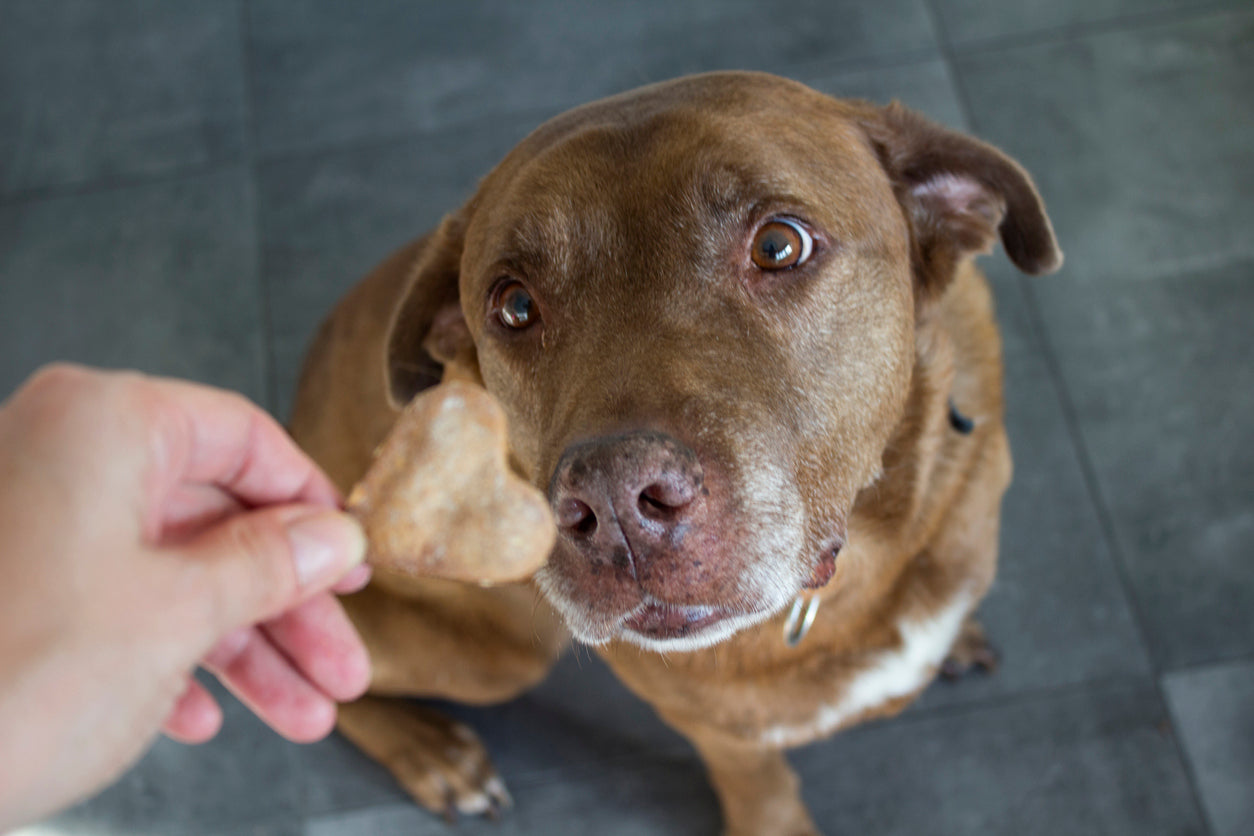The ultimate guide to anxious dog breeds
Anxiousness in dogs can be pretty common, but as an owner you always want to make sure your dog is feeling at their best. Noticing your dog’s anxiety signals can help you support them and remove them from situations they find distressing.
For some dogs, anxiety can be a real problem. Just like us, certain dogs have personalities that are more susceptible to anxiety or fearfulness, and that’s all part of being unique. However, there are some breeds that can display more anxious characteristics than others.
In this guide, we’re running you through some of the most anxious dog breeds, and how you can spot the signs of nervousness in your pet.
What are the signs of anxiety in dogs?
You might be wondering if your dog is anxious. Whether it is separation anxiety, rescue / kennel anxiety, anxiety when traveling in the car or anxiety to lighting and thunder, dogs all express their stress in different ways.
Common signs of anxiety in dogs are:
- Excessive yawning
- Excessive panting
- Whining
- Toileting accidents
- Pacing
- Restlessness
- Drooling
- Aggression
- Destructive behaviour
The most common causes of canine anxiety are fear of abandonment, travelling, loud noises, or being in the company of strange animals or people. In this article, we list down a few ways in which you can better manage your pet’s anxiety level.

Are some breeds more anxious than others?
It is generally thought so, yes. However, we should preface this by saying that we can’t stereotype dog breeds, as there is such a broad range of personalities within each breed. As we know, every dog is unique (and this is why we love them so much).
On top of that, environmental factors and personal experience can also heavily influence how anxious a dog can be, so it’s not all down to the breed. The majority of dogs do exhibit some level of anxiety, with 72.5% of owners saying that their dog has been anxious before.
If your pup seems a little on edge, don’t fret. It can be totally normal, depending on their circumstances. The key is to ensure it doesn’t become a chronic issue by trying to work out your dog’s individual triggers and limit their exposure to them.
Which breeds are the most anxious?
Some breeds are thought to be slightly more anxious as a general rule.
These breeds are:
- Border collie - They are highly intelligent and therefore easily bored, very social and need a lot of physical exercise.
- Labrador Retriever - Contrary to common beliefs, Labradors are not bulletproof when thinking about anxiety. They are extremely social dogs that require a lot of affection and attention.
- Hungarian Vizsla & German Shorthaired Pointer - Both these breeds are hunting dogs and were bred to hunt with humans. They can quickly become bored when left alone and need to be around people and be very active. They hate being away from their owners.
- German Shepherd - This breed bonds tightly to their owner and was bred to shepherd herds of animals. It means that they need a lot of social and mental stimulation and of course lots of exercise.
- Jack Russell - although small in size Jack Russells have big and intense personalities. They were originally bred for hunting and seem to have endless amounts of energy. They need a lot of attention and interaction with their owners.
- Bichon Frisé - They are not specifically very active but are the ultimate social companion that require a lot of time with their family and other dogs.
- Cavalier King Charles - They were bred as companion dogs so can often suffer from separation anxiety.
- Yorkshire terrier - Similar to Cavalier King Charles, Yorkshire terriers are prone to separation anxiety and generally don’t like to be left alone.
Studies also show that the following breeds are also commonly anxious:
- Siberian Husky
- Shetland sheepdogs
- Staffordshire bull terriers
- Miniature schnauzers
- Cocker Spaniels
Source: Prevalence, comorbidity, and breed differences in canine anxiety in 13,700 Finnish pet dogs

What are the main drivers of anxiety for dogs?
Interestingly, studies have found that anxiety in dogs can have a few main triggers. The most common anxiety trigger is loud noises, with separation anxiety or fear of being alone also being common across a variety of breeds.
Common causes of anxiety in dogs are:
- Fear of other dogs
- Fear of strangers
- Fear of new situations
- Fear of being left alone
- Fear of loud noises
- Fear of aggression
- Fear of the vet (40% of Aussie dogs)
Learning your dog’s anxiety triggers and signals
All dogs can be slightly anxious, depending on the situation. If you’re a dog parent you can probably recall the first time you picked your dog up from the breeder or shelter and noticed their nervousness manifest. Going back to this memory can be helpful to identify how they communicate anxiety.
On that first day you got them, they might have shown obvious signs of anxiety like shaking or yawning, or they could have tried to run off or hide from you. You may have noticed they were a bit shy and timid, or they could have gone the other way and been a little bit naughty. Every dog is different, and every dog will express anxiety in a slightly different way, so knowing your dog's personal signs and signals is very important.
For most dogs, the way they express anxiety will remain the same throughout their life, so if you can understand how they show anxiety in the early years it can help you understand your pet in the future.

How to soothe your dog’s anxiety
Cuddles & a safe place to retreat
Cuddles with your pet can help distract them from their anxiety trigger, and stimulate feel good chemicals. When you and your dog share loving cuddles, levels of dopamine and serotonin are elevated for both of you so it is a win-win really.
Providing a dark & quiet, safe place for them to retreat, can help reduce their levels of anxiety.
Keep them physically active and mentally stimulated
We all know how important it is to exercise and the impact it can have on our mood. Well, the same is true for our furry companions. Physical activities are great stress reducers and help dogs release tension. If your pup is not exercised enough or mentally stimulated enough, it could lead to attention-seeking and destructive behaviours.
Natural supplements
Natural supplements like Nectar’s Calm + Relax provide key nutrients to support a healthy and well-balanced nervous system. These nutrients can help dogs better manage and handle stressful situations. Nectar Calm + Relax contains a clinically-proven plant-based ingredient in dogs called Ashwagandha which is a natural relaxant, as well as L-Tryptophan and other calming nutrients and amino acids.
Speak to your vet about medication
Worst case scenario, if you feel your dog’s wellbeing is being compromised by their anxiety, you can ask your vet about medication that can reduce anxiety. These have been shown to be effective in some cases but also do have some side effects (eg. drowsiness, change of personality), so make sure to ask about these too.
Engage the help of a professional canine behaviourist
Fear and anxiety are usually complex conditions that require a multifaceted approach. Behaviour modification techniques, when implemented correctly, could have a profound and positive impact on your dog’s mental state. These include desensitisation and counter conditioning which should be done with the support of a specialist for best results. You can watch one of our podcasts to learn more about the Foundations of Dog Behaviour.
Environment Enrichment
Enriching their environment can be very beneficial for dogs suffering with separation anxiety. When you leave them home alone, you need to provide distractions to keep their mind off the fact that you are not with them. You can enrich their environment by leaving treats and toys in the garden (e.g. kong toys with food inside). These types of distractions will help take their mind of the fact that you aren't there.
Lavender on their collar
Other natural options include placing some lavender oil on their collar or bandana that they can smell. Lavender has been shown to affect the parasympathetic nervous system, and can reduce heart rate and calm the symptoms of anxiety.














